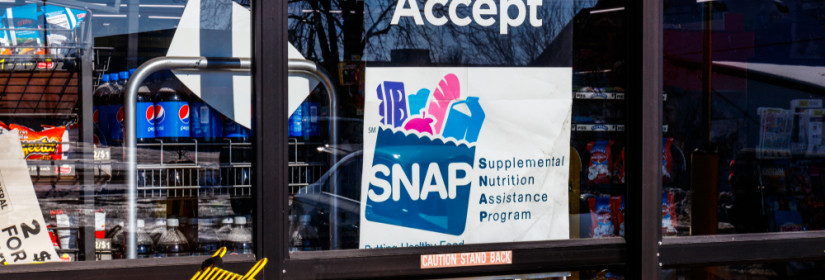What is SNAP (Supplemental Nutrition Assistance Program)


Food Assistance programs in the United States of America date back to 1939, originally starting with a program called FSP, which debuted in New York. In 1961, the Food Stamp Act began distributing food assistance on a more widespread, national basis.
In 2008, with the Farm Bill, the program was renamed to SNAP. SNAP (Supplemental Nutrition Assistance Program) provides food resources for low-income people. SNAP now arrives in the form of a debit card, for use at any SNAP-supported retailer. In 2012, SNAP served 46 million low income people monthly.
Eligibility
To qualify for SNAP benefits, there are certain factors that the government looks at, including: resources, income, deductions, employment, age, and immigration status.Resources
In general, a household must not exceed 130% of the poverty level gross income. For example, a family of four may not gross more than $2628 monthly and still qualify for SNAP, while a 2 person household may not exceed $1726 monthly gross income, which includes Social Security income as well as any income from employment. Vehicles may or may not be counted, depending on the State regulations. Sources that are not counted as income are house and lot, TANF, most retirement plans, and SSI.Deductions
Certain deductions are allowable under SNAP rules. There is a standard deduction of $155 for households of 1 to 3 people and $168 for a household size of 4. Dependent care, child support, and medical expenses over $35 for people over 60 can also be deducted. In addition, some states allow an additional deduction for shelter, if the applicant is homeless or has excessively high shelter costs.Employment
Commonly, there are work requirements for SNAP applicants. Excluding children, seniors, pregnant women, or people who have physical or mental health problems, applicants are required to register for work, continue with current employment, take an offered job, or participate in employment or training programs. Additionally, able bodied adults without dependents must participate in a work program for at least 20 hours weekly to continue to receive benefits for more than 3 months in a 36 month period.Exceptions
There are certain exceptions for the elderly or disabled. An elderly person is a person 60 years of age or older, while the definition for a disabled person is more broad. A person is considered disabled if they: receive federal disability or blindness payments, receive disability retirement benefits from a government agency and qualify for Medicare, receive an annuity under the Railroad Retirement Act, are a veteran who is totally disabled, permanently housebound or in need of regular aid or assistance, or the spouse of such a person. Also, legal immigrants who have been in the country for more than 5 years, have children under 16, or qualify for disability may also be eligible for SNAP.











